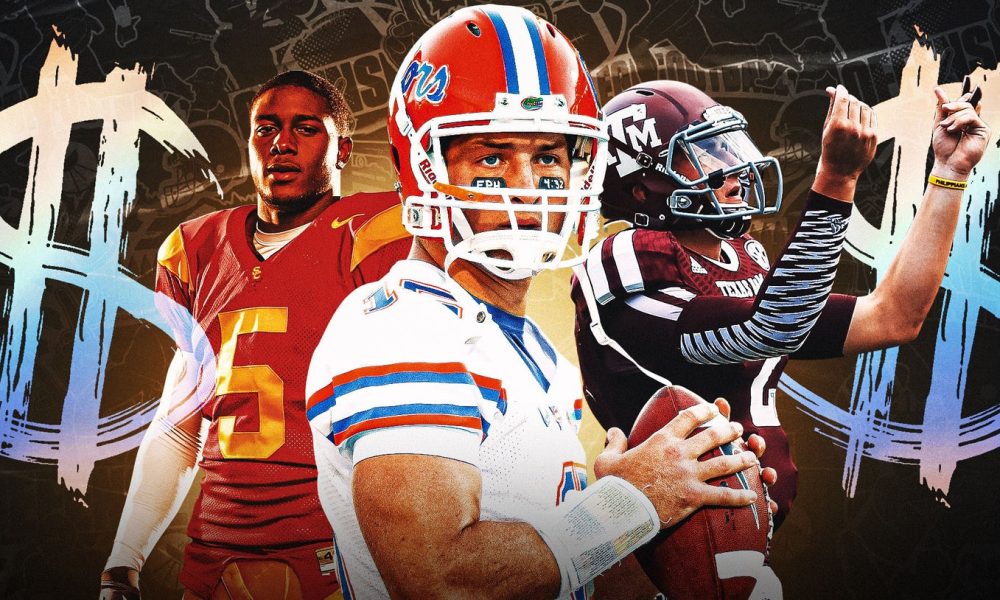NIL
Highest-Paid College Football Players if NIL Existed Since 2000
The analysis explores how college football players would have financially benefited from Name, Image, and Likeness (NIL) deals had they been available since 2000. Writers ranked players like Johnny Manziel, Reggie Bush, and Tim Tebow based on their hypothetical NIL earnings, reflecting on the lucrative potential of their marketability. Manziel leads with an estimated $35 […]

The analysis explores how college football players would have financially benefited from Name, Image, and Likeness (NIL) deals had they been available since 2000. Writers ranked players like Johnny Manziel, Reggie Bush, and Tim Tebow based on their hypothetical NIL earnings, reflecting on the lucrative potential of their marketability. Manziel leads with an estimated $35 million, followed by notable players such as Bush and Tebow, showcasing how the rise of NIL could have dramatically changed athletes’ financial landscapes. This retrospective illustrates the growing tensions between athlete compensation and traditional NCAA policies.
By the Numbers
- Johnny Manziel: $35 million
- Reggie Bush: $25 million
- Tim Tebow: $22 million
- Cam Newton: $20 million
- Vince Young: $15 million
Yes, But
There are contrasting views on whether NIL benefits would have truly leveled the playing field or just enhanced disparities among programs with existing resources. Some argue that while top-tier schools benefit more from these arrangements, lower-tier programs might struggle to compete for top talent.
State of Play
- NIL policies are now a game-changer in college athletics, allowing players to monetize their brand.
- The debate surrounding compensation in college sports continues to evolve as more athletes seek financial opportunities.
What’s Next
Future developments may involve more stringent regulations around NIL deals to address concerns regarding equity among athletes. Additionally, the impact of NIL on recruiting strategies and team dynamics is likely to reshape how colleges approach athletic programs.
Bottom Line
The exploration into past athletes’ potential NIL earnings underscores significant shifts in college athletics, highlighting how financial opportunities could redefine the landscape, empower athletes, and create lasting impacts on the NCAA’s structure.